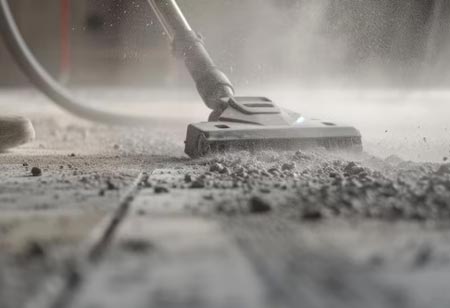Thank you for Subscribing to Construction Business Review Weekly Brief
Specials
- Apartment and Condominium Contractors Canada
- Decking Canada
- Architectural Glass Europe
- MEP APAC
- Construction Saudi Arabia
- German Apartment and Condominium Contractors
- Construction Law APAC
- Outdoor Construction
- Foundation Construction Canada
- MEP Canada
- Kitchen and Bath
- Cold Storage Construction APAC
- Precast Concrete Europe
- Construction Staffing Europe
- Pre-Construction Services
- Flooring System APAC
- Scaffolding Canada
- Swimming Pool Construction Canada
- Construction Management Canada
- Cold Storage Construction Canada
- Flooring Systems Europe
- Residential Construction
- Concrete Canada
- Construction Cladding Europe
- Construction Cladding APAC
- Concretes, Aggregates and Construction Materials APAC
- Concretes, Aggregates and Construction Materials Europe
- Commercial Contractors Europe
- Commercial Contractors APAC
- Dummy
- Construction Insulation, Coating and Waterproofing
- Construction Management APAC
- Landscaping Canada
- Construction Coating Europe
- Construction Tech Startups Europe
- Insulation Services Europe
- Mechanical Contractor Canada
- Mould Remediation and Testing Europe
- Swimming Pool Construction APAC
- Building Sealing Solutions Europe
- Construction Engineering Services
- Mechanical Electrical and Plumbing
- Roofing Systems Europe
- Architectural Glass APAC
- Startups APAC
- Construction Forensic and Owners Representative
- Flooring System
- Waterproofing APAC
- Wall Systems
- Safety and Compliance Europe
- Construction Bidding and Auctions
- Modular and Prefab Construction
- Architectural Glass
- Construction MENA
- Construction Demolition and Recycling Europe
- Modular Construction Europe
- Construction Interiors
- Steel Building APAC
- HVAC
- Doors and windows
- Construction Latam
- Building Information Modeling APAC
- Sustainable Construction APAC
- Building Restoration and Maintenance
- Commercial Contractors
- Specialty Construction
- Construction Engineering Canada
- Construction Engineering MENA
- Modular Construction Canada
- Modular Construction APAC
- Roofing and Siding Systems
- Workforce Management and Staffing
- Roofing Systems APAC
- Construction Consulting
- Steel Building Europe
- Construction Demolition and Recycling APAC
- Safety and Compliance APAC
- Concretes, Aggregates and Construction Materials
- Construction Cladding
Overcoming Obstacles in Commercial Concrete Upkeep Strategies
Concrete can erode over time despite its strength. Regular care is necessary to maintain stability, safety, and appearance when dealing with problems like settling, rebar corrosion, alkali-silica reactions, freeze-thaw damage, and surface upkeep.

By
Construction Business Review | Wednesday, October 08, 2025
Stay ahead of the industry with exclusive feature stories on the top companies, expert insights and the latest news delivered straight to your inbox. Subscribe today.
Fremont, CA: Concrete is renowned for its exceptional strength and durability, but it can deteriorate over time. Regular maintenance is essential to keep your concrete surfaces in optimal condition. By understanding the various challenges that can affect your concrete, you'll be better equipped to address any issues as they arise.
Settling
Concrete settling is a prevalent problem on commercial surfaces, creating uneven ground shifts over time and eventually sinking or cracking. Various circumstances, including soil erosion, inadequate compaction, and moisture changes, can cause this. To avoid settling, the site should be prepared ahead of time and the surface inspected regularly.
Rebar Corrosion
Rebars are commonly used to support commercial concrete surfaces. However, they can corrode when exposed to moisture, salt, or other corrosive chemicals. Because rebar corrosion occurs beneath the concrete, identifying it might be difficult. Use corrosion-resistant rebars and adhere to the suggested minimum cover thickness. It is also critical to keep rebars and concrete at the proper spacing. Regular crack examination and sealing can help avoid moisture seepage and rebar corrosion.
Alkali-Silica Reactions
When exposed to alkaline components, concrete experiences a chemical reaction called alkali-silica reactivity (ASR), causing it to expand and break. Specific aggregates react with the alkaline components in cement, forming alkali-silica gel. The presence of narrow, spidery cracks, often known as map or alligator cracks, is the most typical indicator of ASR. To avoid ASR, seal cracks and seams with low-alkali cement. If the situation is severe, substituting the concrete may be the only option.
Freeze-Thaw Deterioration
Freeze-thaw deterioration is a prevalent problem in concrete when water enters and freezes, weakening the internal pressure and cracking. This is especially widespread in areas with severe climates or brutal winters. Flaking, pitting, spalling, cracking, and visible scarring are common indications. To avoid freeze-thaw damage, concrete must be correctly mixed with entrained air. Air entrainment injects tiny air bubbles into concrete to accommodate the expansion generated by freezing water. A thorough seal of the concrete surface can also help reduce the freeze-thaw cycle's impacts.
Surface Maintenance
Concrete surfaces are essential in commercial environments since they improve strength and function and minimize accidents such as trips, slides, and falls. Regularly sweeping and pressure washing surfaces can help reduce slip risks and combat stubborn filth. Minor surface damage, like cracks or holes, should be addressed immediately to avoid tripping hazards. This maintains a safe and clean space for all users.





